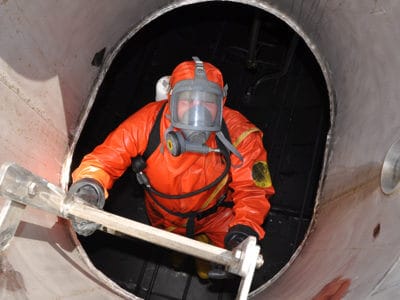
Monitoring Carbon Monoxide
Formula: CO | CAS: 630-08-0
Carbon monoxide is harmful when breathed because it displaces oxygen in the blood and deprives the heart, brain, and other vital organs of oxygen. Large amounts of CO can overcome you in minutes without warning — causing you to lose consciousness and suffocate.
The Basics of Detecting Carbon Monoxide
Properties | Exposure | Detection
Carbon monoxide (CO) is a colourless, tasteless, odourless, and non-irritating gas formed when carbon in fuel is not burned completely. It enters the bloodstream through the lungs and attaches to haemoglobin (Hb), the body’s oxygen carrier, forming carboxyhemoglobin (COHb) and thereby reducing oxygen (O2) delivery to the body’s organs and tissues.
”CO is a common industrial hazard resulting from the incomplete burning of material containing carbon such as natural gas, gasoline, kerosene, oil, propane, coal, or wood. Forges, blast furnaces and coke ovens produce CO, but one of the most common sources of exposure in the workplace is the internal combustion engine.
OSHA FactSheet
Why Is Carbon Monoxide (CO) Harmful?
Acute toxicity includes headache, nausea, dizziness, weakness, confusion, hallucinations and more. While experiencing these symptoms, the reaction to your blood will cause the blood flow to decrease resulting in lower pulse and respiratory rates. Moderate symptoms progress acute symptoms, leading to collapsing and unconsciousness. In severe cases, after a certain amount of exposure over time, moderate symptoms turn into death.
Exposure and concentrations also depend on the type of side effect you initially experience. Prolonged exposure of a concentration of 50 parts per million (ppm) results in acute symptoms. But several hours of exposure at a concentration level of 100ppm leads to moderate effects, and a short time exposure to 5000ppm is lethal.
CO gas is also highly flammable, presenting as dangerous fire and explosion risk. Storage of carbon monoxide gas should be far from areas where fire or ignition sources are present. Vapours from liquified CO gas are heavier than air and travel along the ground to ignition sources, increasing the risk of a fire or explosion. Explosive environments occur when it mixes with air in a volume range of 12.5-74%
CO gas detectors such as ION Science Ara CO detector should be considered as they alert the personnel of dangerous levels of gas exposure. Devices with a fast response time and sturdy construction are important for use in harsh environments where CO may occur. Ara CO detectors help to protect yourself/your employers from this potentially lethal gas is with a personal CO alarm.
The ARA CO single gas detector is a cost-effective personal detector with 24 month or 36 month of continuous operation depending on whether the standard or hibernation model is chosen. This wearable gas detector has only one button to make use simple and alerts workers when concentration levels exceed set safety levels.
Download our FREE Guide
“The Basics of Detecting Carbon Monoxide”
The basics of detecting Carbon Monoxide guide which can be downloaded below provides the reader with an in-depth balance of knowledge learning about the potential risks that are involved when carbon monoxide is detected in multiple industries. Detecting Carbon monoxide via human senses is virtually impossible as it is a colourless, tasteless and odourless gas, thats why the need of a CO detector is vital when working in any confined or high risk spaces. Learn more by downloading our guide and discover our solution to detecting Carbon Monoxide (CO).









 United Kingdom
United Kingdom






